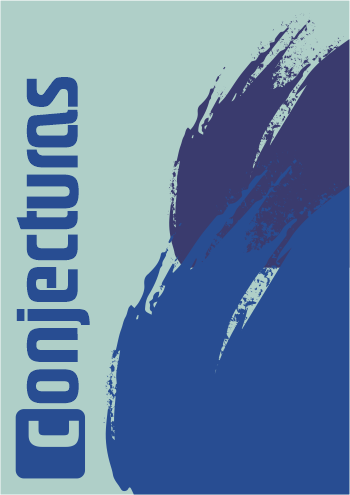A telemedicina na graduação de medicina: seus desafios e benefícios
DOI:
https://doi.org/10.53660/CONJ-1351-W04Palavras-chave:
Telemedicina, Educação médica, Graduação, MedicinaResumo
Introdução: A telemedicina é uma união entre a medicina e a tecnologia, visando o oferecimento de amplo espectro de serviços à comunidade. Durante a pandemia, a telemedicina se tornou essencial, mas levantou o questionamento se a tecnologia de fato poderia ser utilizada para o treinamento médico de acadêmicos. Métodos: Trata-se de uma revisão integrativa da literatura nas bases de dados Pubmed, Cochrane e LILACS com os descritores “telemedicine” e “medical education”. Resultados: De 1675 artigos, 17 estudos fizeram parte da amostra final. A telemedicina, embora apresente pontos negativos, demonstrou-se extremamente custo-efetiva e, por vezes, subestimada. Conclusão: Os artigos demonstraram consonância dos ao inferir que a telemedicina se torna efetiva no ambiente acadêmico, ao proporcionar maior interatividade, integração dos conteúdos, acesso a oportunidades de aprendizado e maior nível de confiança em teleconsultas. Desta forma, se torna necessário a realização de mais estudos para que a telemedicina possa ser aplicada amplamente, reduzindo as suas limitações.
Downloads
Referências
ALMINO, M. A. F. B. et al. Telemedicina: um instrumento de educação e promoção da saúde pediátrica. Rev. bras. educ. méd, v. 38, n. 3, p. 397–402, set. 2014.
BROCKES, C. et al. Evaluation of the Education “Clinical Telemedicine/e-Health” in the Curriculum of Medical Students at the University of Zurich. Telemedicine Journal and E-Health: The Official Journal of the American Telemedicine Association, v. 23, n. 11, p. 899–904, nov. 2017.
BROENS, T. H. F. et al. Determinants of successful telemedicine implementations: a literature study. Journal of Telemedicine and Telecare, v. 13, n. 6, p. 303–309, 1 set. 2007.
CANTONE, R. E. et al. Insomnia Telemedicine OSCE (TeleOSCE): A Simulated Standardized Patient Video-Visit Case for Clerkship Students. MedEdPORTAL: The Journal of Teaching and Learning Resources, v. 15, p. 10867, 27 dez. 2019.
CERQUEIRA-SILVA, T. et al. Bridging Learning in Medicine and Citizenship During the COVID-19 Pandemic: A Telehealth-Based Case Study. JMIR public health and surveillance, v. 7, n. 3, p. e24795, 4 mar. 2021
DARNTON, R. et al. Medical students consulting from home: A qualitative evaluation of a tool for maintaining student exposure to patients during lockdown. Medical Teacher, v. 43, n. 2, p. 160–167, fev. 2021.
DOW, N. et al. ’GP Live’- recorded General Practice consultations as a learning tool for junior medical students faced with the COVID-19 pandemic restrictions. Education for primary care: an official publication of the Association of Course Organisers, National Association of GP Tutors, World Organisation of Family Doctors, v. 31, n. 6, p. 377–381, nov. 2020.
KEYNEJAD, R. et al. Telemedicine for peer-to-peer psychiatry learning between U.K. and Somaliland medical students. Academic Psychiatry: The Journal of the American Association of Directors of Psychiatric Residency Training and the Association for Academic Psychiatry, v. 37, n. 3, p. 182–186, 1 maio 2013.
LIU, C. et al. EQClinic: a platform for learning communication skills in clinical consultations. Medical Education Online, v. 21, p. 31801, 2016.
LIU, L.; MIYAZAKI, M. Telerehabilitation at the University of Alberta. Journal of Telemedicine and Telecare, v. 6 Suppl 2, p. S47-49, 2000.
LOCATIS, C. et al. Communication and proximity effects on outcomes attributable to sense of presence in distance bioinformatics education. BMC medical education, v. 11, p. 10, 2011.
MAKOUL, G.; SCHOFIELD, T. Communication teaching and assessment in medical education: an international consensus statement. Patient Education and Counseling, v. 37, n. 2, p. 191–195, jun. 1999.
MANN, K. V. Theoretical perspectives in medical education: past experience and future possibilities: Pedagogy: past and future. Medical Education, v. 45, n. 1, p. 60–68, jan. 2011.
MASON, P. B. et al. The use of technology and perceptions of its effectiveness in training physicians. Medical Teacher, v. 36, n. 4, p. 333–339, abr. 2014.
NOVACK, D. H. et al. A pilot test of WebOSCE: a system for assessing trainees’ clinical skills via teleconference. Medical Teacher, v. 24, n. 5, p. 483–487, jan. 2002.
PARK, A. et al. A pilot study of new approaches to teaching anatomy and pathology. Surgical Endoscopy, v. 15, n. 3, p. 245–250, mar. 2001.
QUEVEDO L, I.; MATUS B, O.; ARELLANO V, J. Telemedicina como herramienta de enseñanza de la endocrinología en estudiantes de medicina. Rev. chil. endocrinol. diabetes, v. 12, n. 4, p. 199–204, 2019.
RIENITS, H.; TEUSS, G.; BONNEY, A. Teaching telehealth consultation skills. The Clinical Teacher, v. 13, n. 2, p. 119–123, abr. 2016.
STEWART, M. A. Effective physician-patient communication and health outcomes: a review. CAN MED ASSOC J, p. 11, 1995.
FERREIRA, Edinaldo. Legislação e a telemedicina: abordagem dos desafios jurídicos na prestação de cuidados da saúde à distância. Global Dialogue, v. 6, n. 3, p. 16-29, 2023.
Downloads
Publicado
Como Citar
Edição
Seção
Licença
Copyright (c) 2022 Conjecturas

Este trabalho está licenciado sob uma licença Creative Commons Attribution 4.0 International License.



